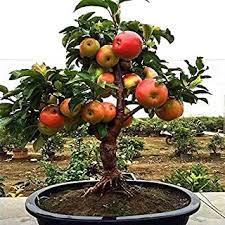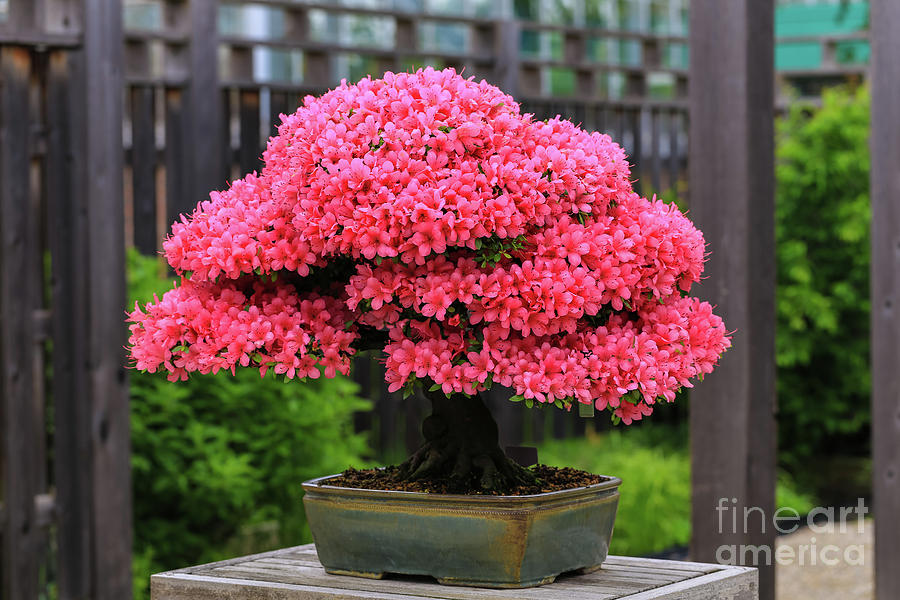How Do I Choose My Bonsai Tree Tools?
To choose bonsai tree tools, consider the type of tree you have and the specific tasks you need to perform. Additionally, consider the quality, durability, and comfort of the tools.
Bonsai trees require delicate and precise care, so having the right tools is essential. Proper care of a bonsai tree requires the use of specialized tools. These tools are designed to help you shape and maintain the tree’s size and appearance.
When choosing your tools, it’s important to consider the type of tree you have and the specific tasks you need to perform.
For example, if you have a small or delicate bonsai tree, you’ll need finer tools for precision work. On the other hand, if you have a larger or more robust tree, you’ll likely need sturdier tools to handle the task.
Furthermore, consider the quality, durability, and comfort of the tools to ensure they will last and provide a comfortable grip for extended periods of use. Taking these factors into account will help you choose the right bonsai tree tools for your needs.
What Are The Different Bonsai Tool Categories?
As a bonsai enthusiast, it is crucial to choose the right tools to maintain the health and beauty of your miniature trees. Bonsai trees require specialized care, which necessitates the use of specific tools designed for various tasks. Understanding the different categories of bonsai tools is essential for making informed choices for your bonsai tool kit.
Tools For Pruning And Trimming
Pruning and trimming are necessary tasks to maintain the shape and size of your bonsai tree, promoting healthy growth and the development of desirable features. To achieve precise and controlled pruning, there are several indispensable tools to consider:
- Concave branch cutters: These unique cutters are designed with a curved blade that creates a concave cut, allowing for quicker healing and minimizing scarring on the tree.
- Bud shears: Bud shears have narrow, sharp blades that enable precise trimming of buds and small branches with ease.
- Pruning shears: Pruning shears are versatile tools used for general pruning and cutting of branches up to a certain thickness. Make sure to choose a pair with a sharp blade to ensure clean cuts.
Tools For Repotting And Soil Maintenance
Regularly repotting your bonsai tree is crucial to provide it with fresh soil, which promotes proper drainage and nutrient absorption. Additionally, maintaining the soil’s moisture level and texture is fundamental for the tree’s overall health. The following tools are essential for repotting and soil maintenance:
Root rake: The root rake is an indispensable tool for carefully untangling and combing the roots during the repotting process, ensuring efficient root growth.
Bonsai soil sieves: These sieves are used to separate larger particles from the soil, resulting in a finer and more suitable substrate for your bonsai tree.
Bonsai soil scoop: To transfer the new soil or remove excess soil during repotting, a soil scoop is vital. Its rounded shape allows for easy handling and precise application.
Tools For Wiring And Shaping
Wiring and shaping are techniques used to train bonsai trees into desired forms, achieving a balanced and aesthetically pleasing appearance. To accomplish effective wiring and shaping, the following tools are essential:
- Bonsai wire cutters: These cutters are specifically designed to cut bonsai wire cleanly without causing damage to the tree’s branches.
- Bonsai wire: High-quality anodized aluminum wire or copper wire is used to gently bend and shape branches, guiding their growth into desired positions.
- Branch benders: Branch benders allow for controlled bending of thicker branches, ensuring gradual shaping without causing excessive strain or breakage.
How To Evaluate The Quality Of Bonsai Tools?
Evaluating the quality and choosing the right bonsai tools requires careful consideration of factors like durability, material, and functionality. By ensuring the tools are of high quality, bonsai enthusiasts can enhance their tree care experience and achieve better results in shaping and maintaining their bonsai trees.
Material:
The material used to construct the tools plays a crucial role in determining their quality. Look for tools made from high-quality stainless steel or carbon steel as they offer excellent resistance to rust, corrosion, and wear. These materials also provide a sharp cutting edge, allowing you to prune and trim your bonsai tree with precision.
Design:
The design of bonsai tools influences their functionality and ease of use. Opt for tools that have an ergonomic design, featuring comfortable handles and a lightweight construction. This will ensure that you can work on your bonsai tree for extended periods without experiencing fatigue or discomfort. Additionally, tools with a specialized design, such as concave cutters and root hooks, can further enhance your bonsai care techniques.
Craftsmanship:
The craftsmanship of bonsai tools is a reflection of their overall quality. Look for tools that are meticulously crafted, with sharp and precise edges. Inspect the tool for any signs of poor manufacturing, such as uneven edges or loose parts. Well-crafted tools are not only more durable but also provide cleaner cuts, promoting better healing for your bonsai tree.
Brand reputation:
When evaluating the quality of bonsai tools, considering the reputation of the brand is essential. Look for reputable bonsai tool manufacturers with a history of producing high-quality products. Brands that have been in the industry for a long time often invest in research and development to improve their tools, ensuring that you have access to the best tools for your bonsai needs.
Recognizing Signs Of Inferior Quality Tools
Poor-quality bonsai tools can hinder your ability to care for your bonsai tree effectively. By recognizing the signs of inferior-quality tools, you can avoid potential frustration and disappointment. Here are a few indicators to watch out for:
- Flimsy construction: Tools that have a cheap or flimsy construction are likely to break or bend easily, making them ineffective for precise and controlled bonsai work.
- Dull edges: Bonsai tools with dull edges will result in rough and messy cuts, potentially causing harm to your bonsai tree or impeding its healing process.
- Loose or unstable parts: Tools with loose or unstable parts can compromise their functionality and pose a safety risk during your bonsai care routine.
- Minimal brand information: Lack of clear brand information or vague product descriptions can be an indication of low-quality tools. Reputable brands are usually transparent about their manufacturing processes and materials used.
Selecting The Essential Bonsai Tools For Beginners
Bonsai, the art of growing miniature trees, requires the use of specific tools to shape and maintain these delicate plants. As a beginner, choosing the right bonsai tools can be overwhelming. To help you get started on your bonsai journey, we have curated a list of must-have tools for beginners along with budget-friendly alternatives for each tool.
Must-have Tools For Beginners
When it comes to bonsai tools, there are a few essentials that every beginner needs in their arsenal. These tools will help you shape and maintain your bonsai tree effectively. Here are the must-have tools for beginners:
Pruning Shears: Pruning shears are indispensable for bonsai enthusiasts. Look for high-quality shears that are sharp and have a comfortable grip. They are used to trim branches, leaves, and roots.
Concave Branch Cutter: A concave branch cutter is a specialized tool used to remove branches without leaving unsightly scars. Its unique design ensures a clean cut, promoting faster healing and preserving the aesthetics of your bonsai tree.
Wire Cutters: Wire is often used to shape and train bonsai branches. Wire cutters with a rounded head are essential for safely removing the wire after it has served its purpose. This tool ensures that you don’t damage the branches while removing the wire.
Bonsai Knife: A bonsai knife is a versatile tool that can be used for a variety of purposes, such as repotting, root pruning, and creating clean cuts. Look for a sharp and durable bonsai knife that fits comfortably in your hand.
Root Hook: A root hook is a small metal tool with a hooked end that is used to gently separate and untangle the roots during repotting. It helps prevent damage to the delicate root structure of your bonsai tree.
Budget-friendly Alternatives For Each Tool
As a beginner, you may be hesitant to invest in expensive bonsai tools. Fortunately, there are budget-friendly alternatives available that still deliver satisfactory results.
Here are some budget-friendly alternatives for each tool:
| Tool | Budget-friendly Alternative |
| Pruning Shears | Garden shears or sharp scissors can be used as a budget-friendly alternative to pruning shears. Just ensure they are clean and sharp. |
| Concave Branch Cutter | A knob cutter or bypass pruner can be used as a cheaper alternative to concave branch cutters. Though not as precise, they can still get the job done. |
| Wire Cutters | A regular wire cutter or a small pair of pliers can be used as an alternative to specialized bonsai wire cutters. Make sure they are capable of cutting the wire without damaging the branches. |
| Bonsai Knife | A sharp pocket knife or a small utility knife can serve as a budget-friendly alternative to a bonsai knife. Just be cautious while handling the knife. |
| Root Hook | A small, sturdy dental pick or a bent paperclip can be used as a budget-friendly alternative to a root hook. Take care not to exert excessive force while untangling the roots. |
Frequently Asked Questions
What Does Each Bonsai Tool Do?
Bonsai tools have specific functions: shears trim branches, concave cutters remove stubs, wire helps shape branches, root hooks loosen soil, and brushes clean.
What Is The Difference Between Knob Cutter And Concave Cutter?
The key difference between a knob cutter and a concave cutter is their purpose. A knob cutter is used to remove knobs and branches, while a concave cutter is designed to create concave cuts for better healing and aesthetics.
What Is The Easiest Bonsai Tree For Beginners?
The easiest bonsai tree for beginners is the Ficus bonsai. It is low-maintenance and forgiving, making it perfect for those new to bonsai cultivation. With proper care, the Ficus bonsai can thrive and provide a beautiful addition to your indoor or outdoor space.
What Is The Two-Branch Rule For Bonsai?
The two-branch rule for bonsai a technique where each branch is divided into two smaller branches. This helps create a fuller and more balanced appearance in the bonsai tree. It is important to follow this rule when pruning and shaping bonsai trees to achieve the desired aesthetic outcome.
Conclusion
To choose the right bonsai tree tools consider the specific needs of your trees, such as size and type. Take into account your skill level and personal preferences as well. Quality tools that are durable and comfortable to handle are essential.


